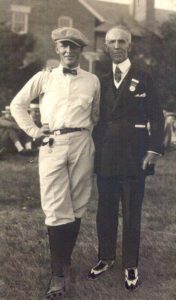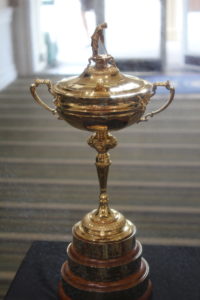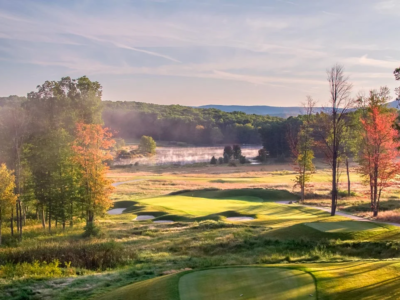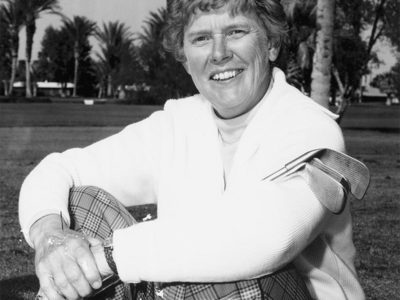By Fred Altvater
For serious sports fans there is the Super Bowl, World Series, World Cup, Wimbledon, the Stanley Cup, Daytona 500, Boston Marathon and the Ryder Cup that stand as the biggest and best competitions in each of their respective sports.
This year the biennial Ryder Cup will be held September 25-30, at Le Golf Club National, just outside of Paris, France. It is the first time the Ryder Cup has visited France and preparations have been ongoing for four years to make this a marquee event.
With golf fans traveling from all parts of the world, security is always a concern and the French government has guaranteed a “Ring of Steel” will protect the players, as well as, spectators.
The Ryder Cup has an Ohio Connection

S.P. Jermain with Bobby Jones at Inverness Golf Club.
It’s a little-known fact, that S.P. Jermain a golf pioneer and designer of Toledo’s Ottawa Park, the first public golf course west of New York, first suggested a competition to pit the best golfers from Great Britain & Ireland versus a team from the United States, during a dinner with golf officials in New York City in 1920.
The first of these exhibitions was played at Gleneagles in 1921, with the second held at Wentworth, in London, in 1926. Notably a local seed merchant, Samuel Ryder, was in the gallery, in 1926, and was so taken by the competition, he donated £250 to create the trophy, that still bears his name today.
The United States team dominated the first Ryder Cup matches, 18-3-1. The matches had become so lopsided that in 1977, Jack Nicklaus suggested that players from continental Europe be added to the team. Thus, Seve Ballesteros, from Spain, and Germany’s Bernhard Langer immediately became eligible for the new European Team. Since then, the matches have become one of the most even and hotly contested team competitions in the world today.
Since 1979, Europe has won eight times, the U.S. seven, with one match ending in a tie. Prior to the U.S. win at Hazeltine in 2016, the Europeans had won three consecutive Ryder Cup matches, 2010 at Celtic Manor, 2012 in Medinah and 2014 at Gleneagles.
 The top eight players on both teams earn an automatic berth on the team, through a two-year qualification process. The final four spots, or “Captain’s Picks,” are chosen from a list of the best available players by each team’s Captain. This year Thomas Bjorn made the final choices for the Europeans and Jim Fuyk leads Team USA.
The top eight players on both teams earn an automatic berth on the team, through a two-year qualification process. The final four spots, or “Captain’s Picks,” are chosen from a list of the best available players by each team’s Captain. This year Thomas Bjorn made the final choices for the Europeans and Jim Fuyk leads Team USA.
The matches are competed over three days with the first four sessions, held over the first two days, featuring four-ball and twosome, two-man team competition. The final day, Sunday, each captain submits his list of the 12 men for the singles matches. The captains must decide to play their strongest men early in the day, or hold them for a late rally.
With the matches being so tightly contested over the past several years, the Sunday singles matches have brought on some of the most memorable moments in Ryder Cup history.
Who will ever forget, Phil Mickelson and Sergio Garcia combining for 19 birdies and a better-ball score of 18 under par 58, at Hazeltine. Also, Patrick Reed and Rory McIlroy put on one of the most entertaining matches, in 2016, with Reed surviving, to best the Irishman, 1-up on the final hole.
This year the Ryder Cup will undoubtedly provide the same fierce competition between the world’s best golfers. Europe will be keen to win back the cup on European soil and the U.S. team will want to return with the cup to America when the fighting is complete.
Whatever the outcome, the Ryder Cup has become one of the best examples of sports at its finest. Both teams compete to win, but when it’s over the winners are recognized with the dignity, befitting a well-fought competition.
The ideals of golf are still being upheld today, nearly 100 years after the first Ryder Cup matches were held. I think S.P. Jermain and Samuel Ryder would highly approve.








